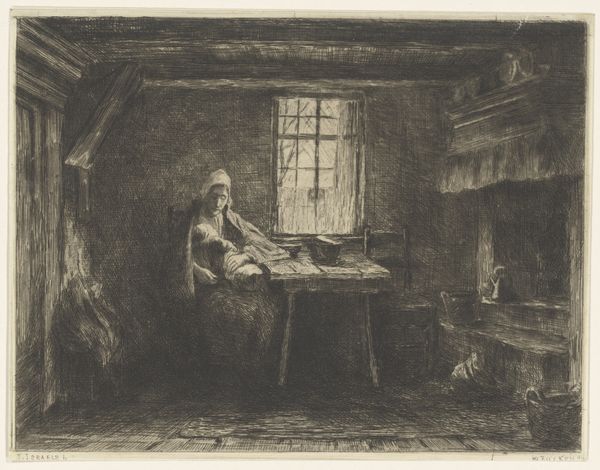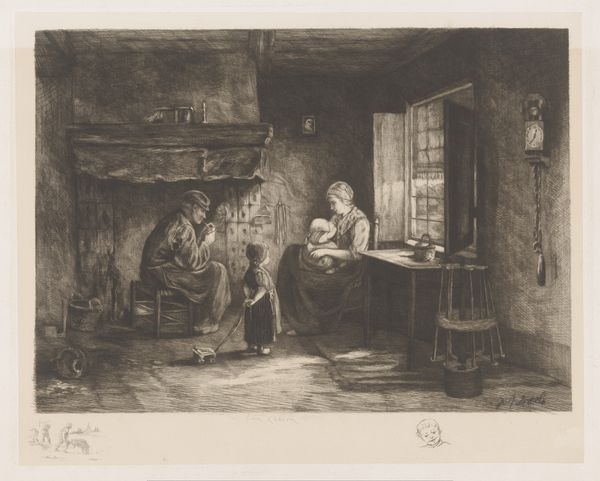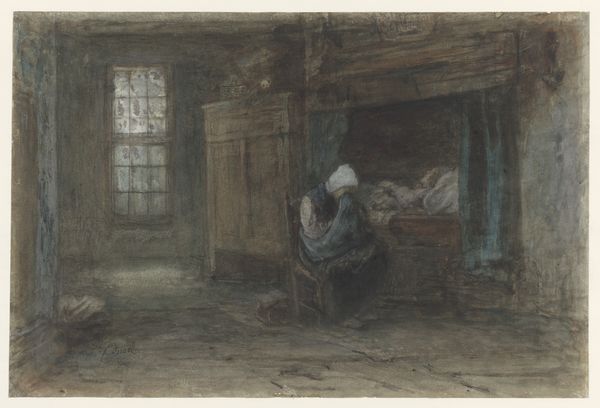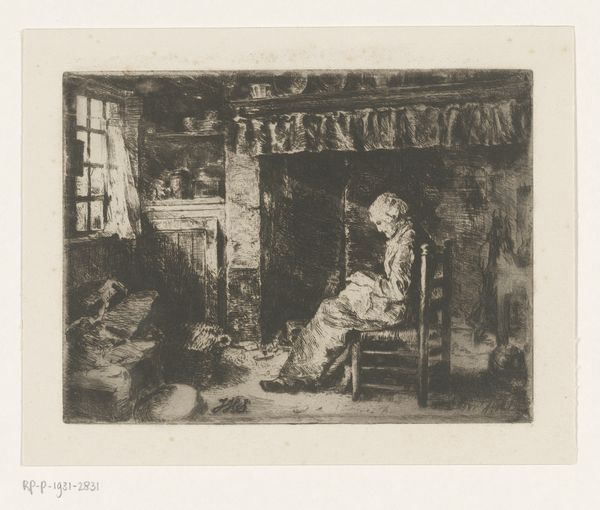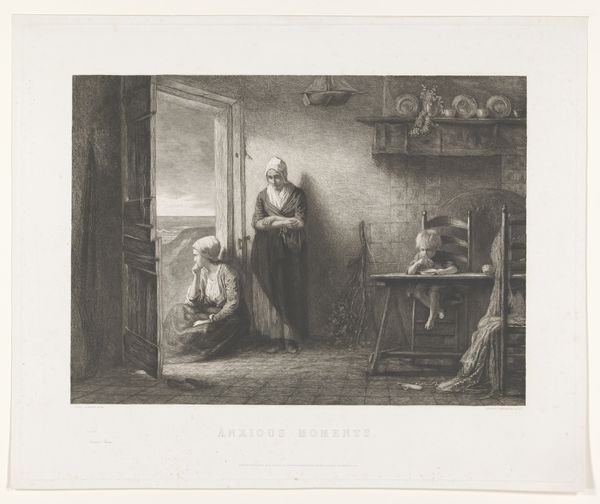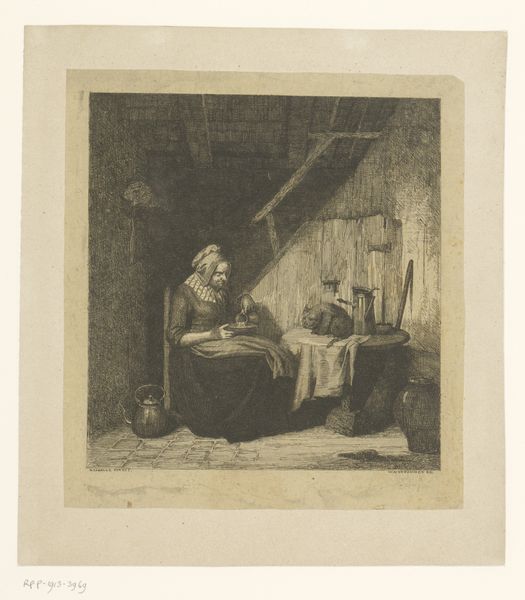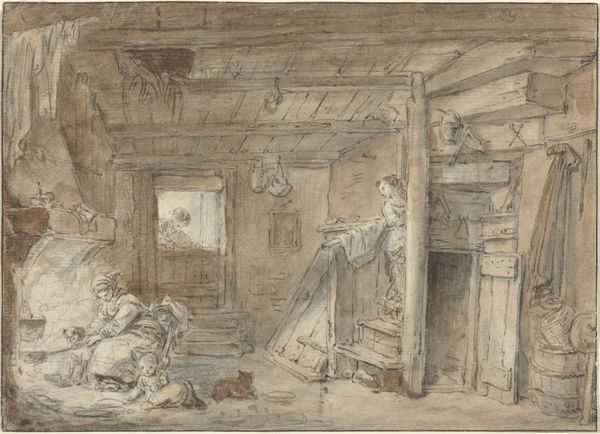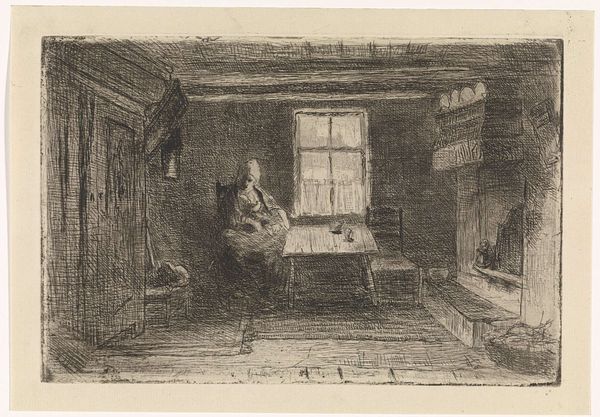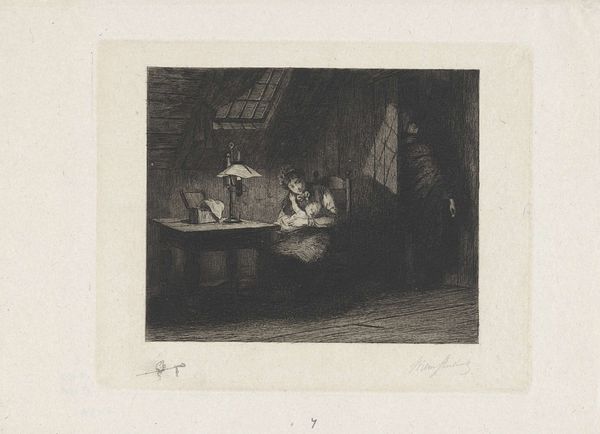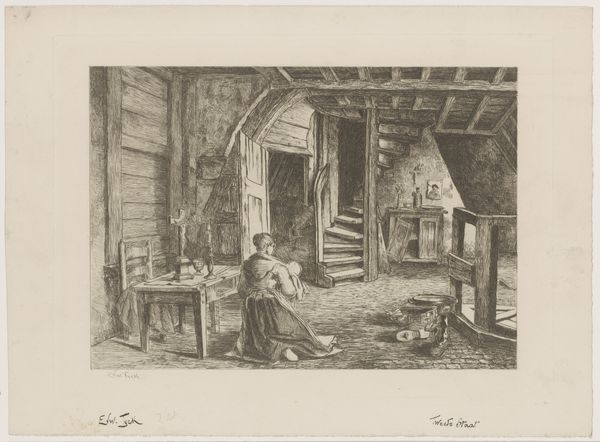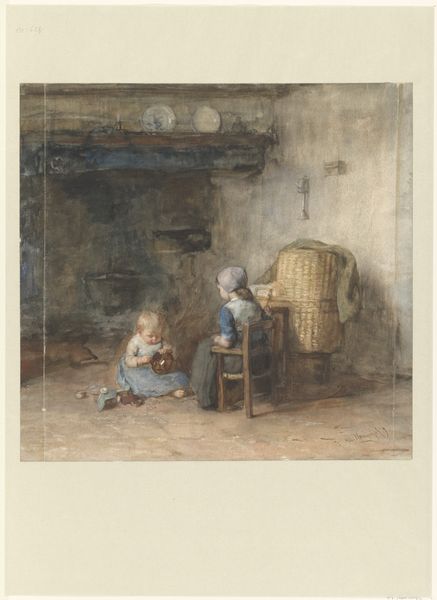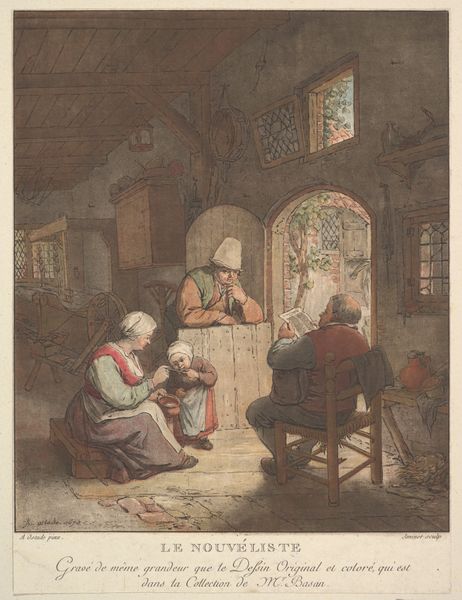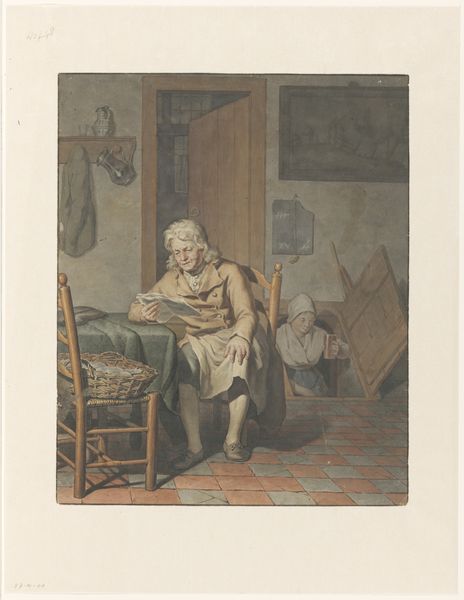
painting, watercolor
#
dutch-golden-age
#
painting
#
landscape
#
watercolor
#
genre-painting
#
realism
Dimensions: height 275 mm, width 338 mm
Copyright: Rijks Museum: Open Domain
Curator: Here we have Jozef Israëls' "Boerenbinnenhuis," created sometime between 1834 and 1911, a genre painting in watercolor, housed here at the Rijksmuseum. Editor: My first impression is of quiet intimacy. There's a pervasive stillness evoked through the subdued palette and the geometric interplay of lines—the floorboards, the beams, and the stark rectangular window. Curator: The domestic scene is bathed in muted tones, typical of the Dutch Realist movement, yet there's also a connection to Dutch Golden Age painting in the focus on humble, everyday life. Do you think the woman represents resilience? Editor: Perhaps. The central placement and light falling upon her could symbolize strength, yes, but equally she might represent perseverance. Her act of mending—restoring something— echoes through the texture, composition, and color. It's as though the watercolor medium itself is used to reveal the past and recreate, not erase, traces of the old ways. Curator: I find the symbolism quite powerful. This woman represents the keeper of traditions, in this humble farmhouse setting. The window in this image is interesting; in much of Dutch art, the window offers an exterior view, which this doesn’t appear to have; rather, here, it may speak to an interior state of being. The artist may want to remind the public of its shared origins and core values through this common scene, rendered beautifully in Realist style. What do you make of its ties to landscape painting? Editor: Intriguing thought! The structure creates this image. The horizontality of the floor planks contrasted with the verticality of the fireplace evokes tension and resolution as our eyes travel to the focal point in the composition, that square window; however, even the architectural beams act as a frame within a frame to draw our eyes away to that illuminated outdoors, which otherwise wouldn’t have been revealed. Curator: This piece really emphasizes a deep connection to our past. We should take with us today a sense of that fortitude and the shared cultural heritage of which the woman seems to serve as the emblem here. Editor: Absolutely, and considering this, the artist successfully and simultaneously utilizes the power of art in both the image’s representation, and its visual structure, to remind us of where we came from.
Comments
No comments
Be the first to comment and join the conversation on the ultimate creative platform.
